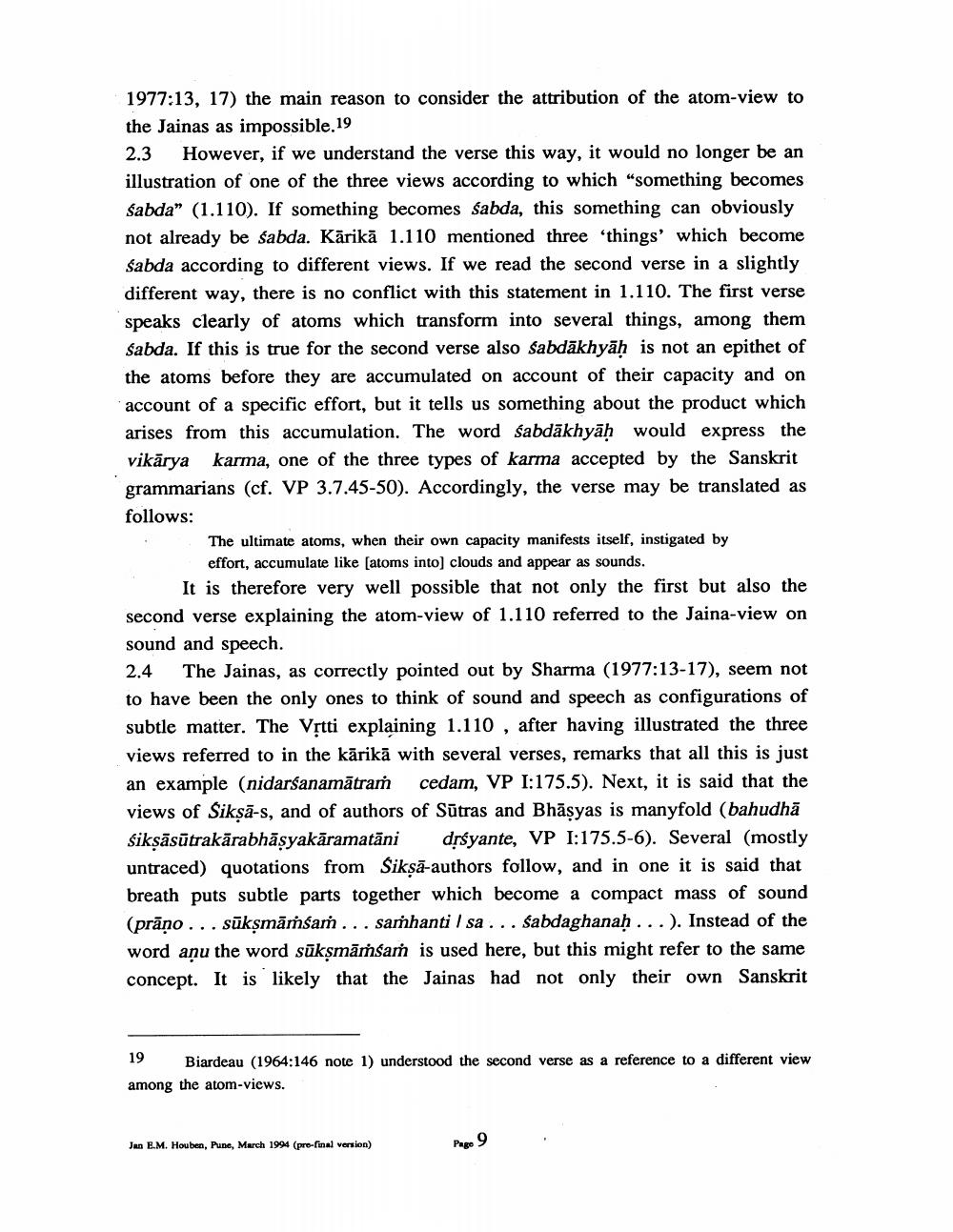Book Title: Bhartrharis Familiarity With Jainism Author(s): Jan E M Houben Publisher: Jan E M Houben View full book textPage 9
________________ 1977:13, 17) the main reason to consider the attribution of the atom-view to the Jainas as impossible.19 2.3 However, if we understand the verse this way, it would no longer be an illustration of one of the three views according to which "something becomes sabda" (1.110). If something becomes sabda, this something can obviously not already be sabda. Kārikā 1.110 mentioned three things' which become sabda according to different views. If we read the second verse in a slightly different way, there is no conflict with this statement in 1.110. The first verse speaks clearly of atoms which transform into several things, among them sabda. If this is true for the second verse also sabdākhyāḥ is not an epithet of the atoms before they are accumulated on account of their capacity and on account of a specific effort, but it tells us something about the product which arises from this accumulation. The word śabdākhyāḥ would express the vikārya karma, one of the three types of karma accepted by the Sanskrit grammarians (cf. VP 3.7.45-50). Accordingly, the verse may be translated as follows: The ultimate atoms, when their own capacity manifests itself, instigated by effort, accumulate like (atoms into] clouds and appear as sounds. It is therefore very well possible that not only the first but also the second verse explaining the atom-view of 1.110 referred to the Jaina-view on sound and speech. 2.4 The Jainas, as correctly pointed out by Sharma (1977:13-17), seem not to have been the only ones to think of sound and speech as configurations of subtle matter. The Vịtti explaining 1.110, after having illustrated the three views referred to in the kārikā with several verses, remarks that all this is just an example (nidarśanamātrar cedam, VP I:175.5). Next, it is said that the views of Sikṣā-s, and of authors of Sūtras and Bhāşyas is manyfold (bahudhā śikṣāsūtrakārabhāsyakāramatāni drśyante, VP I:175.5-6). Several (mostly untraced) quotations from Siksā-authors follow, and in one it is said that breath puts subtle parts together which become a compact mass of sound (prāņo... sūkņmāṁsaṁ . . . saṁhanti / sa... sabdaghanaḥ...). Instead of the word anu the word sūksmāṁsaṁ is used here, but this might refer to the same concept. It is likely that the Jainas had not only their own Sanskrit 19 Biardeau (1964:146 note 1) understood the second verse as a reference to a different view among the atom-views. Jan E.M. Houben, Pune, March 1994 (pre-final version) Page 9Page Navigation
1 ... 7 8 9 10 11 12 13 14 15 16 17 18 19 20 21 22
